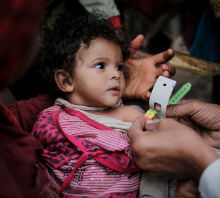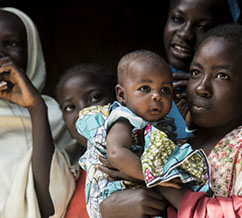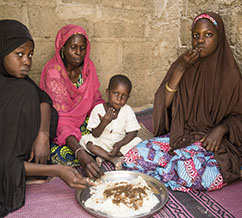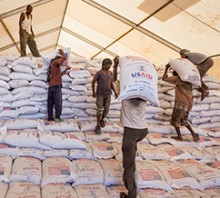Speeches Shim
The food security and nutrition situation in southeastern Ethiopia is deteriorating, with some households in parts of acutely drought-affected Somali Region experiencing an elevated risk of Catastrophe—IPC 5—levels of acute food insecurity, according to the USAID-funded Famine Early Warning Systems Network (FEWS NET).4 Relief actors—including USAID/OFDA and USAID/FFP—are monitoring the evolving food security and nutrition situation and scaling up ongoing humanitarian interventions.
In addition to continued population displacement, ongoing insecurity and economic desperation have led to increasing violent incidents targeting humanitarian personnel and assets—limiting access to some populations in need and exacerbating existing vulnerabilities. Relief actors reported 100 humanitarian access incidents in South Sudan in June, representing the highest number of incidents recorded in a single month in 2017 to date, and a continuation of increased looting in July.
Today the United States announced more than $169 million in humanitarian assistance to support those in Ethiopia and Kenya who are experiencing the effects of prolonged severe drought. This additional funding, including nearly $137 million in Ethiopia and nearly $33 million in Kenya, brings the total U.S. humanitarian contribution in Ethiopia and Kenya to more than $458 million in Fiscal Year 2017.
As of July 26, health agencies had recorded more than 408,000 suspected cholera cases and 1,885 associated deaths in Yemen, according to the UN World Health Organization (WHO). UN agencies, in coordination with humanitarian partners, have scaled up cholera response efforts to address widespread health and water, sanitation, and hygiene (WASH) needs throughout cholera-affected areas.
Armed attacks in Nigeria and Chad result in civilian casualties and hinder humanitarian access. USAID partners continue providing life-saving health, food, and WASH support across northeastern Nigeria, where more than 13,100 people have spontaneously returned from Cameroon since April. Flooding in Niger results in more than 20 deaths and affects nearly 19,500 people.





Comment
Make a general inquiry or suggest an improvement.